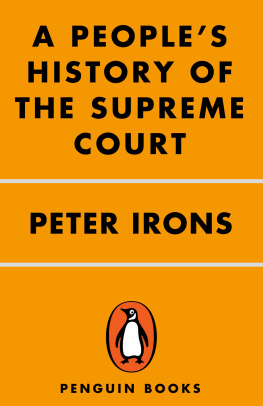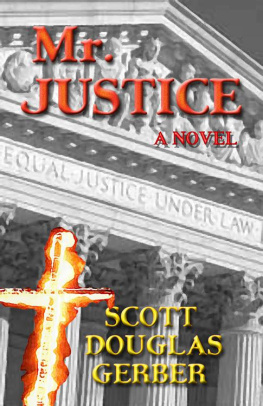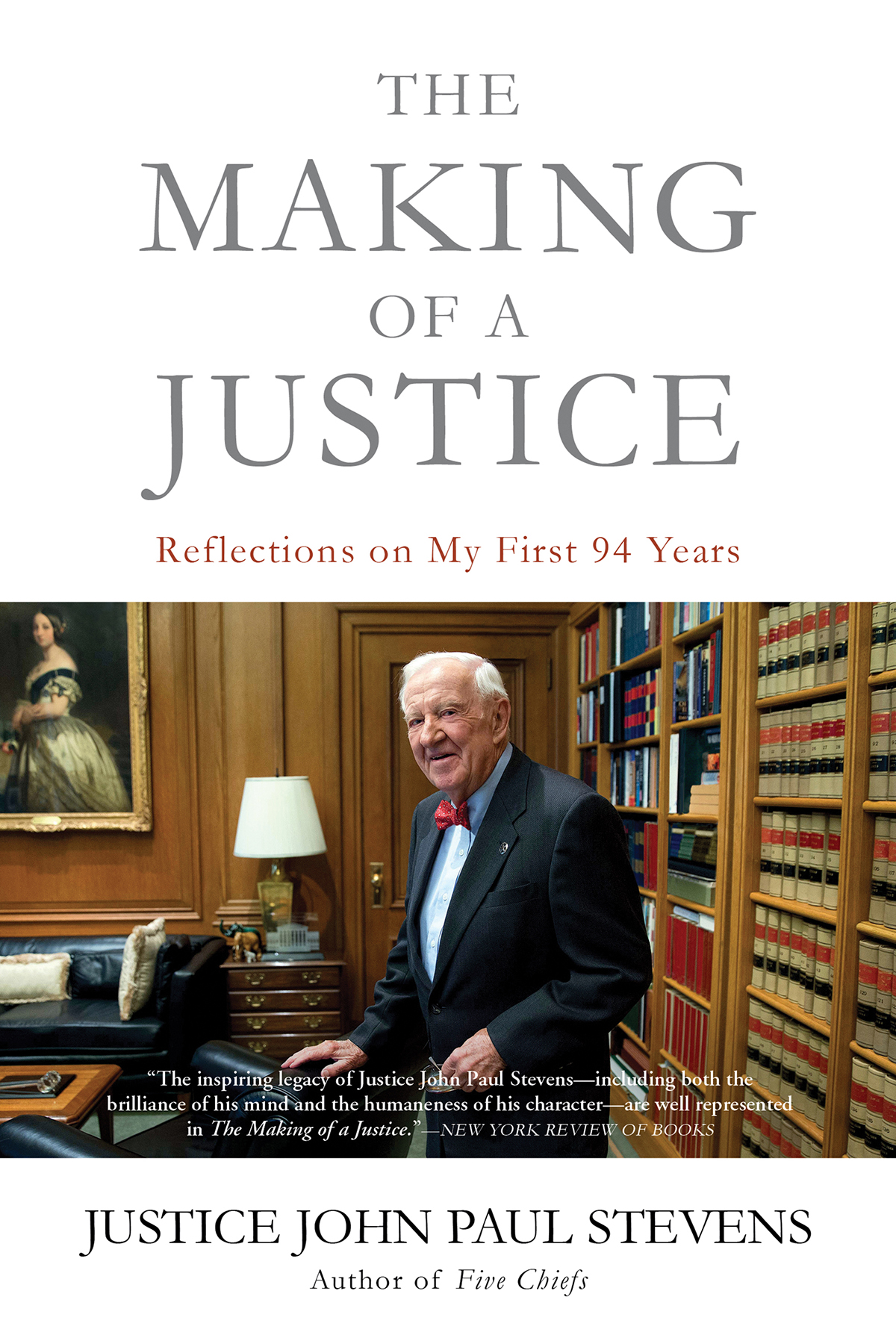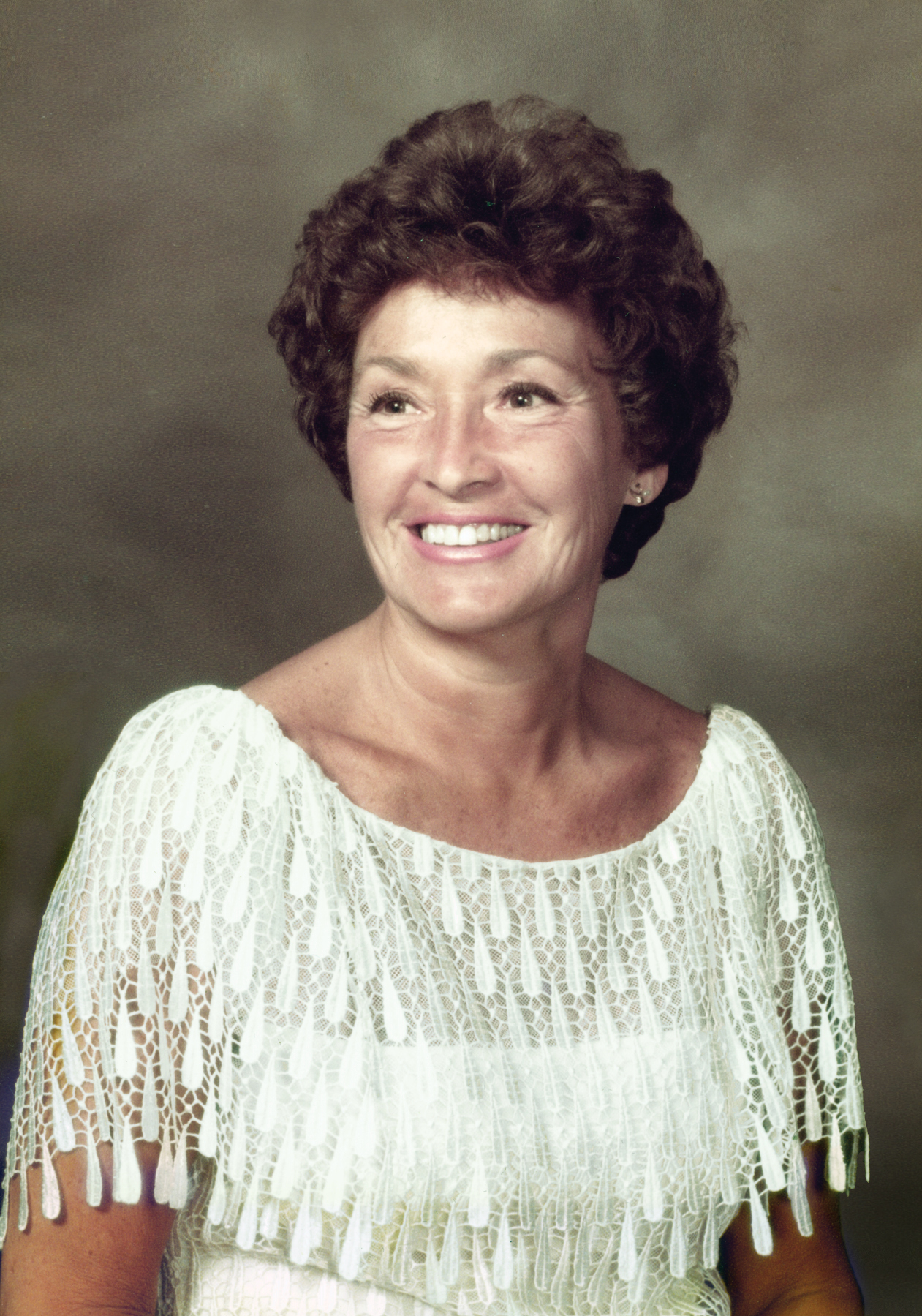Justice John Paul Stevens - The Making of a Justice: Reflections on My First 94 Years
Here you can read online Justice John Paul Stevens - The Making of a Justice: Reflections on My First 94 Years full text of the book (entire story) in english for free. Download pdf and epub, get meaning, cover and reviews about this ebook. year: 2019, publisher: Little, Brown and Company, genre: Detective and thriller. Description of the work, (preface) as well as reviews are available. Best literature library LitArk.com created for fans of good reading and offers a wide selection of genres:
Romance novel
Science fiction
Adventure
Detective
Science
History
Home and family
Prose
Art
Politics
Computer
Non-fiction
Religion
Business
Children
Humor
Choose a favorite category and find really read worthwhile books. Enjoy immersion in the world of imagination, feel the emotions of the characters or learn something new for yourself, make an fascinating discovery.

- Book:The Making of a Justice: Reflections on My First 94 Years
- Author:
- Publisher:Little, Brown and Company
- Genre:
- Year:2019
- Rating:5 / 5
- Favourites:Add to favourites
- Your mark:
The Making of a Justice: Reflections on My First 94 Years: summary, description and annotation
We offer to read an annotation, description, summary or preface (depends on what the author of the book "The Making of a Justice: Reflections on My First 94 Years" wrote himself). If you haven't found the necessary information about the book — write in the comments, we will try to find it.
When Justice John Paul Stevens retired from the Supreme Court of the United States in 2010, he left a legacy of service unequaled in the history of the Court. During his thirty-four-year tenure, Justice Stevens was a prolific writer, authoring more than 1000 opinions. In The Making of a Justice, he recounts his extraordinary life, offering an intimate and illuminating account of his service on the nations highest court.
Appointed by President Gerald Ford and eventually retiring during President Obamas first term, Justice Stevens has been witness to, and an integral part of, landmark changes in American society during some of the most important Supreme Court decisions over the last four decades. With stories of growing up in Chicago, his work as a naval traffic analyst at Pearl Harbor during World War II, and his early days in private practice, The Making of a Justice is a warm and fascinating account of Justice Stevenss unique and transformative American life.
Justice John Paul Stevens: author's other books
Who wrote The Making of a Justice: Reflections on My First 94 Years? Find out the surname, the name of the author of the book and a list of all author's works by series.




